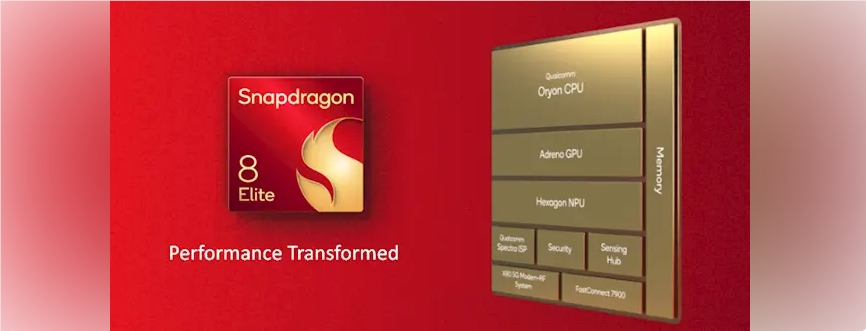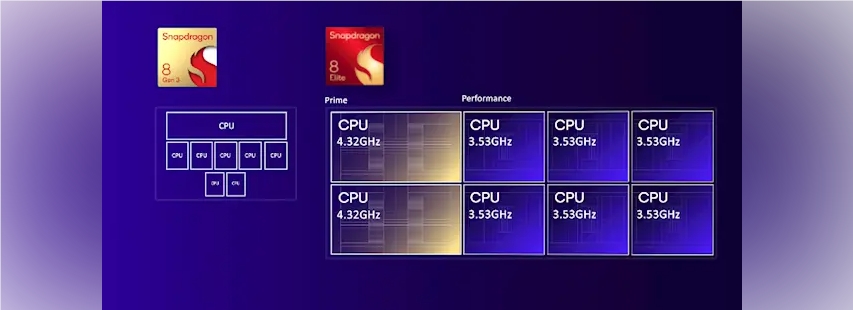Downcodes editor reported: Qualcomm launched the Snapdragon 8 Extreme Edition mobile platform at the Snapdragon Technology Summit. This chip is manufactured using TSMC’s second-generation 3nm process and is equipped with Qualcomm’s self-developed Oryon CPU architecture. In terms of performance and energy efficiency All achieved significant improvements. It adopts a full large-core design, with a CPU frequency of up to 4.32GHz, and performance and energy efficiency improvements of up to 50% and 45% respectively. The GPU has also been newly designed, with performance improved by 40%, power consumption reduced by 40%, and ray tracing performance improved by 35%.
On October 22, 2024, Qualcomm released a new flagship mobile platform-Snapdragon 8 Extreme Edition at the Snapdragon Technology Summit. This chip is manufactured using TSMC's second-generation 3nm process and is equipped with Qualcomm's self-developed Oryon CPU architecture, achieving dual improvements in performance and energy efficiency.
The Snapdragon 8 Extreme Edition is Qualcomm's first mobile platform to adopt an all-large-core design, canceling the previous design idea of mixing large and small cores. Its CPU part consists of two super cores clocked at 4.32GHz and six performance cores clocked at 3.53GHz, setting a new record for mobile phone processor frequency. Compared with the previous generation Snapdragon 8Gen3, the CPU performance of Snapdragon 8 Extreme Edition can be improved by up to 50%, and the energy efficiency can be improved by up to 45%.

In terms of GPU, the Snapdragon 8 Extreme Edition adopts a new slicing design, dividing the GPU into three groups, all with a frequency of 1.1GHz. This design enables better task distribution and concurrency, resulting in improved performance and lower power consumption. Compared with the previous generation, the GPU performance of the Snapdragon 8 Extreme Edition has been improved by 40%, power consumption has been reduced by 40%, and ray tracing performance has been improved by 35%.

In terms of AI, the Snapdragon 8 Extreme Edition has comprehensively upgraded the Qualcomm AI engine, including CPU, GPU, NPU and other modules. Among them, the performance and energy efficiency of Hexagon NPU have been increased by 45%, the AI performance of the sensor hub has been increased by 60%, and the AI inference speed has been increased by 45%. The Snapdragon 8 Extreme Edition also supports the offline running of personalized and multi-modal AI assistants on the terminal side for the first time. Voice interaction is more sensitive and there is almost no delay.

In terms of imaging, the Snapdragon 8 Extreme Edition has created a new AI ISP and is deeply integrated with the Hexagon NPU to process AI features directly on the terminal side. For the first time, the NPU can directly access raw RAW sensor data on the ISP, enabling real-time AI-assisted enhancement of 4K60fps video shooting. In addition, the Snapdragon 8 Extreme Edition also supports AI imaging functions such as unlimited semantic segmentation, real-time AI fill light, and video magic elimination.
In terms of connectivity, the Snapdragon 8 Extreme Edition is the world’s first mobile platform to support AI-enhanced 5G and Wi-Fi connections, integrating the Snapdragon X805G baseband and radio frequency system. The Snapdragon 80 baseband has achieved many industry firsts, including the first to support 6 downlink carrier aggregation, the first to support 6 Rx receiver paths, the first to support AI/5G-A integration, etc. In addition, the Snapdragon 8 Extreme Edition also supports AI-enhanced Wi-Fi 7, with peak speeds claimed to be 2.4 times that of competing products.
Qualcomm said that terminal manufacturers such as ASUS, Honor, iQOO, Motorola, Nubia, OnePlus, OPPO, Red Magic, Redmi, realme, Samsung, vivo, Xiaomi, ZTE, etc. will successively launch new phones based on the Snapdragon 8 Extreme Edition. .
The Snapdragon 8 Extreme Edition has significant improvements in performance, energy efficiency, AI and imaging, and will bring users a more powerful mobile experience in the future. We look forward to the launch of mobile phones equipped with this chip as soon as possible!